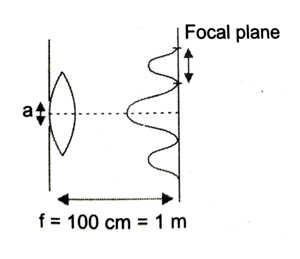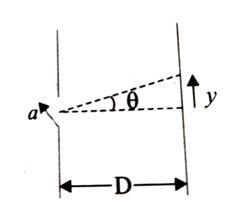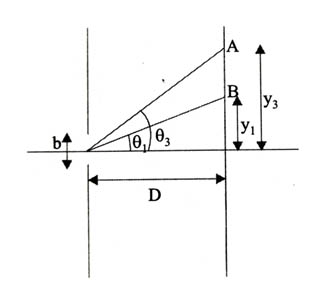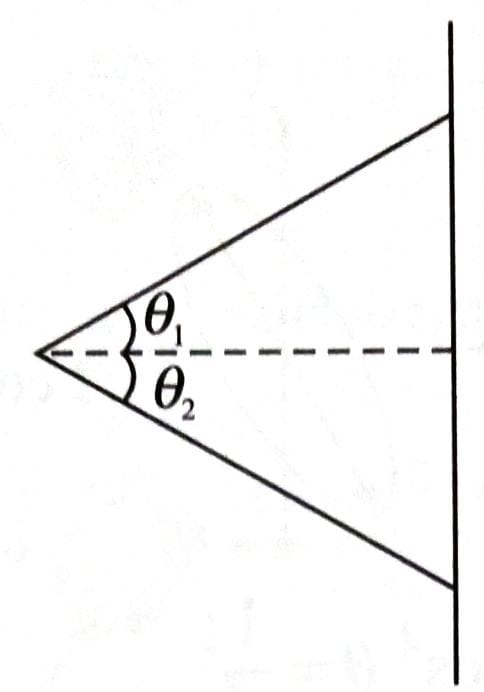Topic Question Set
Q 1
:
A monochromatic light of wavelength 6000 is incident on the single slit of width 0.01 mm. If the diffraction pattern is formed at the focus of the convex lens of focal length 20 cm, the linear width of the central maximum is [2024]
60 mm
24 mm
120 mm
12 mm
(2)
Q 2
:
A microwave of wavelength 2.0 cm falls normally on a slit of width 4.0 cm. The angular spread of the central maxima of the diffraction pattern obtained on a screen 1.5 m away from the slit will be [2024]
30°
15°
60°
45°
(3)
Q 3
:
A parallel beam of monochromatic light of wavelength 600 nm passes through a single slit of 0.4 mm width. Angular divergence corresponding to the second order minima would be ____ × rad. [2024]
(6)
Total divergence =
Q 4
:
A parallel beam of monochromatic light of wavelength 5000 is incident normally on a single narrow slit of width 0.001 mm. The light is focused by a convex lens on the screen, placed on its focal plane. The first minima will be formed for the angle of diffraction of ____ (degree). [2024]
(30) For first minima
Q 5
:
The diffraction pattern of a light of wavelength 400 nm diffracting from a slit of width 0.2 mm is focused on the focal plane of a convex lens of focal length 100 cm. The width of the 1st secondary maxima will be [2024]
2 mm
2 cm
0.02 mm
0.2 mm
(1)

Q 6
:
In a single slit experiment, a parallel beam of green light of wavelength 550 nm passes through a slit of width 0.20 nm. The transmitted light is collected on a screen 100 cm away. The distance of first order minima from the central maximum will be m. The value of is _____. [2024]
(275)

Q 7
:
In a single slit diffraction pattern, a light of wavelength 6000 is used. The distance between the first and third minima in the diffraction pattern is found to be 3 mm when the screen is placed 50 cm away from the slits. The width of the slit is ____m. [2024]
(2)
For minima
( is small so sin is small, hence b tan = )
(Position of minima)

minima, minima
Q 8
:
If the measured angular separation between the second minimum to the left of the central maximum and the third minimum to the right of the central maximum is 30° in a single slit diffraction pattern recorded using 628 nm light, then the width of the slit is ________ m. [2025]
(6)
Angular position of minima
Angular position of minima


